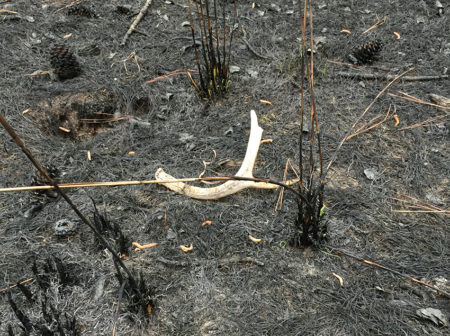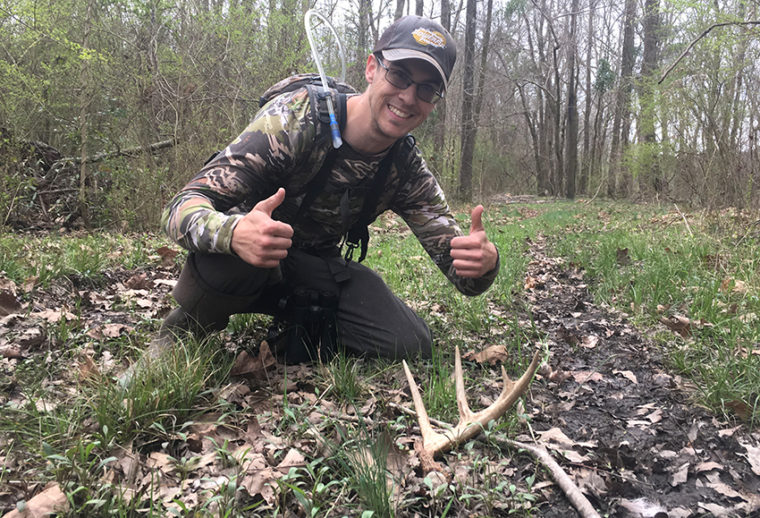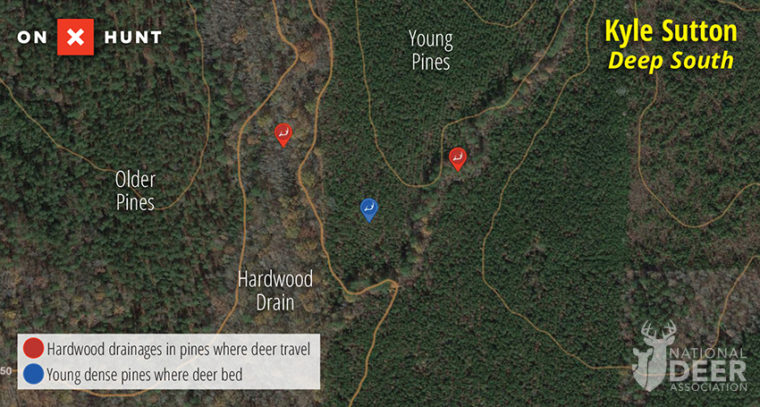It’s winter, and soon it will seem like everyone is posting grip-and-grin photos on social media of massive shed antlers they are finding. This is an exciting time of year for avid shed hunters but an equally frustrating time if you aren’t looking for sheds in the right spot. I’ve learned that your shed-hunting strategy must be finely tweaked to locate sheds in your cover type, topography and region.
For example, I have been told by many hunters in the South that you just can’t find sheds here because there is too much land, antlers are too small, or they get chewed up immediately after dropping. However, this has not been my experience at all when using strategies suited to this corner of the whitetail’s range.
I had never read a comprehensive article with shed-hunting strategies for specific regions of the whitetail’s range. So, I wrote one! I interviewed six shed-hunting nuts from the Midwest, Mississippi River Valley, Deep South, Appalachian Mountains, Northeast, and the Northern Great Plains. All these guys are hardcore shed hunters, walking hundreds of miles each spring to pile up whitetail sheds. They are very experienced in their respective regions and have excellent advice for other shed hunters wanting to stack up antlers.
NDA members read my article in Quality Whitetails magazine in 2020. Now, NDA is going to share my article free online, right here, in six parts over the next six weeks. To be notified as each part is released, sign up for NDA’s free e-newsletter here.
Each installment of this series is accompanied by a map from the onX Hunt app in that region, showing terrain and locations where actual sheds were found as examples of good places to look in that region. Let’s look at what the experts had to say, starting with Kyle Sutton in the Deep South.
Kyle Sutton – South Carolina/Georgia
When it comes to shed hunting the South, there seems to be as many excuses on why you can’t find sheds as there are guys out there seriously shed hunting. Due to large, monotonous timber tracts, this is a difficult region to begin finding sheds in, so I recently talked to my buddy Kyle Sutton in Georgia about his tactics.
Kyle, seen in the photo at the top, has been shed hunting South Carolina and Georgia for years and consistently picks up 60-plus sheds a year. He has some fine-tuned strategies that we will cover in a minute, but he attributes most of his success to his “grind it out” attitude. He makes a point that many new shed hunters in the South get discouraged when they walk 10 to 15 miles in a day without picking up a shed, but this is part of the game. Kyle did not find a shed his first year of hunting for them, even though he covered close to 80 miles hiking.
“The more you walk, the more your mind will take you where you need to be as you get those search images down,” he said.
Kyle’s strategies specific to the South can help you cut through this learning curve. His favorite place to look for sheds is along water regardless of where he is. In pine plantations, drainages will be accompanied by a narrow 50-plus-foot buffer of hardwoods, usually with an understory of thick gallberry, eastern baccharis or privet. In open longleaf pine stands, these can be the only strips of cover on a property, further concentrating deer. Kyle will walk the edges of these drainages and check good trails crossing through them. He picks up the bulk of his sheds close to water.

Prescribed fire is good for deer habitat but also makes shed hunting easier by revealing sheds hidden in thick cover.
Moving away from water, Kyle concentrates his effort in transitions between bedding cover and water or between bedding cover and food. Kyle’s approach to large pine plantations is to cover a lot of ground fast and slow down once he finds good sign or begins finding sheds. Using this approach, he will walk open pine stands or longleaf pine sandhills where he can spot a shed from a long way off and search for areas deer are feeding or spending time. He notes these areas are also best to walk after a prescribed fire because it reduces the amount of vegetation concealing sheds, making them more visible.
When searching public ground, Kyle will spend extra time before he begins walking trying to locate freshly burned areas. One other land feature Kyle focuses on is dense young pine plantations deer use for thermal cover in winter.
Kyle does not use trail-cameras or any other pre-season scouting to locate bucks prior to shedding. He is confident enough in his ability spotting sheds of all sizes that he can walk most any area and pick up sheds, no matter how small. This approach is straightforward: cover the ground and you will find the sheds. He walks on average 15 miles per a day, sometimes reaching 20 on longer days.
Next week, we’ll head to the Midwest with Evan Lawler. Stay tuned, and remember to sign up for NDA’s e-newsletter to get all of NDA’s deer hunting content as soon as it’s available.

